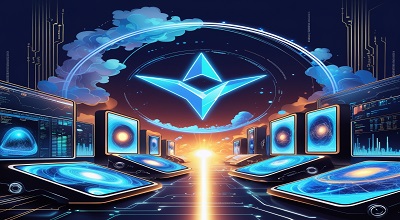Vertex AI Meets Next-Gen Generative AI
Vertex AI Meets Next-Gen Generative AI: Artificial Intelligence (AI) is undergoing a transformative shift, with generative AI media models leading the charge in innovation and creativity. From generating hyper-realistic images to composing music and writing human-like text, these models are redefining what machines can create. At the heart of this revolution is Google’s Vertex AI, a unified machine learning (ML) platform that empowers businesses to build, deploy, and scale AI models efficiently.
In this website post, we’ll explore how Vertex AI is expanding with the next generation of generative AI media models, their applications across industries, integration strategies, ethical challenges, and future trends. Whether you’re an AI developer, business leader, or tech enthusiast, this deep dive will provide valuable insights into the evolving landscape of AI-powered creativity.
Understanding Vertex AI and Generative AI
Before diving into the advancements, it’s essential to grasp the fundamentals of Vertex AI and generative AI.
What is Vertex AI?
Vertex AI is Google Cloud’s end-to-end ML platform, designed to streamline the development and deployment of AI models. It combines AutoML (for no-code model training) and custom training (for advanced ML engineers) under one roof, along with powerful MLOps tools for managing model lifecycles.
What is Generative AI?
Generative AI refers to algorithms that create new content—such as text, images, audio, and video—by learning patterns from existing data. Unlike traditional AI (which classifies or predicts), generative AI produces original outputs. Key technologies include:
- Generative Adversarial Networks (GANs) – Used for image/video synthesis.
- Transformer Models (GPT, BERT) – Power advanced text generation.
- Diffusion Models (DALL·E, Stable Diffusion) – Generate high-quality images from text prompts.
Why Combine Vertex AI with Generative AI?
Vertex AI provides the scalability, security, and infrastructure needed to deploy generative models at an enterprise level. With Google’s TPUs (Tensor Processing Units) and GPU clusters, businesses can train and fine-tune large models efficiently while optimizing costs.
The Evolution of Generative AI Media Models
From basic text generation to photorealistic image synthesis, generative AI has come a long way.
Early Generative Models
- Markov Chains & RNNs – Early text generators with limited coherence.
- First-Gen GANs (2014) – Produced blurry but groundbreaking synthetic images.
Breakthroughs in Modern Generative AI
- Transformers (2017) – Revolutionized NLP (GPT-3, ChatGPT).
- Diffusion Models (2020s) – Enabled high-fidelity image generation (DALL·E 3, MidJourney).
- Multimodal AI – Models like Gemini combine text, images, and audio understanding.
Vertex AI’s Role in Advancing Generative AI
Google’s infrastructure allows for:
- Large-scale model training with distributed computing.
- Fine-tuning pre-trained models for industry-specific use cases.
- Seamless deployment via Vertex AI’s MLOps tools.
Key Features of Next-Gen Generative AI in Vertex AI
The latest wave of generative AI models brings unprecedented capabilities to Vertex AI.
1. Enhanced Text Generation
- Few-shot & zero-shot learning – Models adapt with minimal examples.
- Code generation – Tools like Codey assist developers in writing software.
2. Hyper-Realistic Image & Video Synthesis
- Text-to-image (DALL·E, Imagen) – Create marketing visuals in seconds.
- AI video editing – Automate scene generation and post-production.
3. Audio & Speech Generation
- Text-to-speech (TTS) – Natural-sounding AI voices for podcasts and IVRs.
- AI music composition – Generate royalty-free background scores.
4. Multimodal AI Capabilities
- Cross-modal generation – Convert text descriptions into images/videos.
- Interactive AI assistants – Blend chat, image recognition, and voice.
Use Cases Across Industries
Generative AI in Vertex AI is revolutionizing multiple sectors.
| Industry | Applications |
|---|---|
| Marketing | AI-generated ads, personalized content |
| Entertainment | AI scriptwriting, virtual influencers |
| Healthcare | Synthetic medical data, drug discovery |
| E-Commerce | AI product descriptions, virtual try-ons |
| Education | AI tutors, automated course creation |
Challenges & Ethical Considerations
While generative AI offers immense potential, it also raises critical concerns:
- Bias in AI models – Ensuring fairness in training data.
- Deepfake misuse – Combating misinformation.
- Data privacy – Complying with GDPR and other regulations.
Future Trends
The future of generative AI in Vertex AI includes:
- Self-improving models – Autonomous fine-tuning.
- Edge AI – Real-time generation on devices.
- AI-human collaboration – Co-creation tools for artists and developers.
Conclusion
As generative AI continues to evolve, Vertex AI stands at the forefront of this revolution, offering businesses the tools to harness creativity at scale. From automating content creation to accelerating R&D, the possibilities are limitless—provided we navigate the ethical challenges responsibly.
Are you ready to integrate generative AI into your workflows? Explore Vertex AI today and unlock the next wave of innovation.
FAQs
1. What is Vertex AI, and how does it support generative AI?
Vertex AI is Google Cloud’s unified ML platform that simplifies deploying generative AI models like GPT-4 and DALL·E at scale.
2. Can I fine-tune generative models in Vertex AI?
Yes! Vertex AI supports custom training and fine-tuning of open-source and proprietary models.
3. What industries benefit most from generative AI?
Marketing, entertainment, healthcare, and e-commerce see the most immediate impact.
4. How does Vertex AI handle AI ethics?
Google provides Responsible AI tools for bias detection, explainability, and compliance.
5. What’s next for generative AI in Vertex AI?
Expect real-time generation, multimodal AI agents, and tighter cloud integrations.
Free Here: Super Mario Run APK

